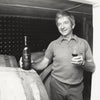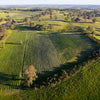Gifting has never been easier
Perfect if you're short on time or are unable to deliver your gift yourself. Enter your message and select when to send it.

By entering our website, you confirm that you are of legal drinking age in your country. By selecting 'Remember Me,' you consent to Henschke using cookies to remember your birth date and country validation for future website sessions. See our Privacy Policy to learn how we handle your personal information.
Cyril Henschke purchased the Eden Valley property in 1966, and established a large planting of predominantly riesling and shiraz at a time when riesling was scarce and bonuses were being paid by the large wineries. Today the riesling is the source of the Julius Eden Valley Riesling, named in honour of Stephen's great-uncle Julius Henschke, a highly acclaimed artist and sculptor, while the shiraz is the centre-point of the Keyneton Euphonium blend.

1877

1966

1978

1995
Eden Valley Vineyard Today